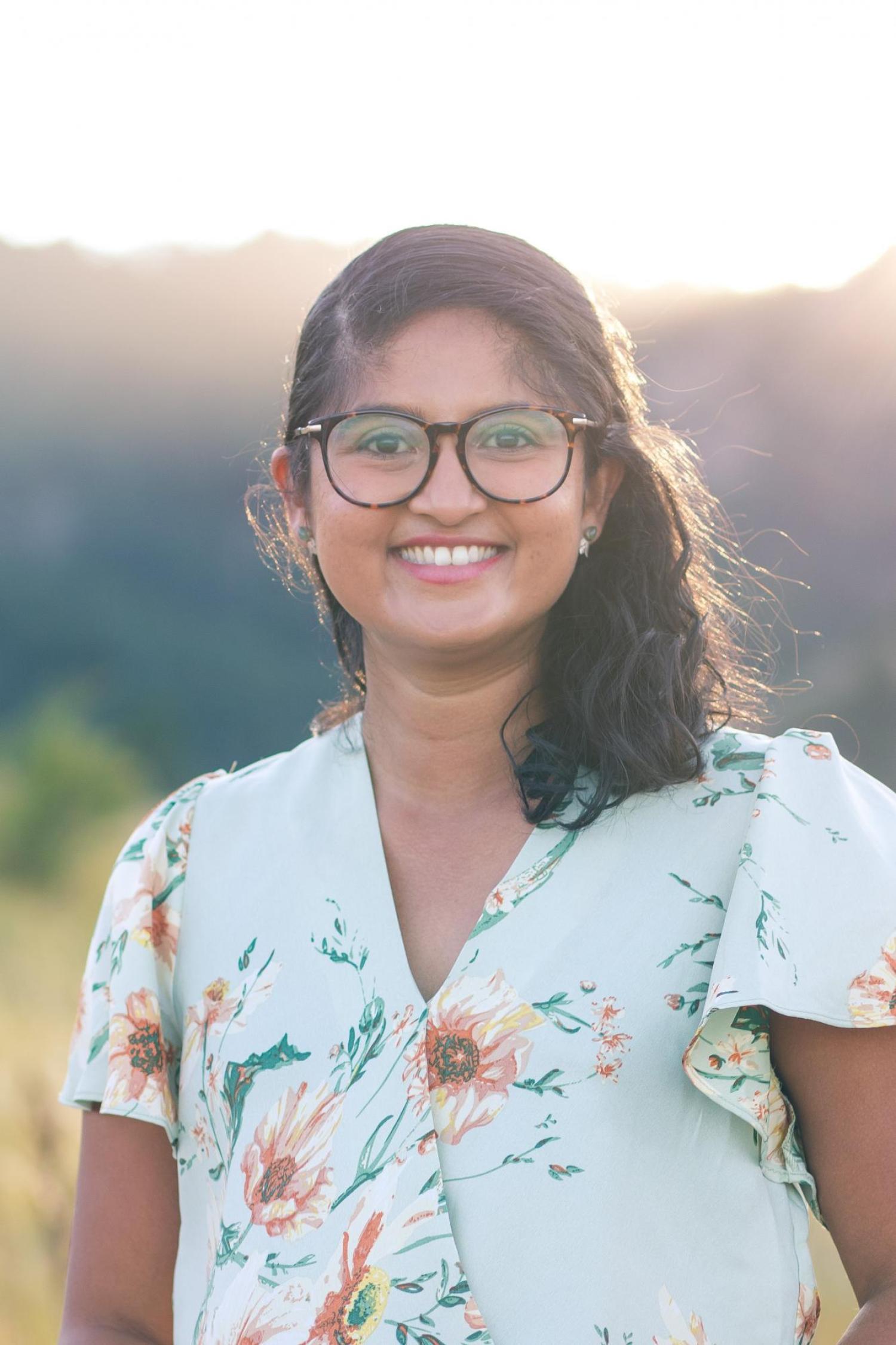Setting the stage for cell 'directors' to repair fractures: Rao wins Three Minute Thesis competition

Varsha Rao
What do movie sets and biomaterial environments have in common? According to Varsha Rao, a fifth-year PhD student in the Anseth Lab who placed first in the Three Minute Thesis (3MT) competition on Feb. 16, they both need "directors" to call the shots.
The 3MT competition is held by the CU Boulder Graduate School to help graduate students hone their thesis pitch and public speaking and presentation skills. Rao was among ten CU Boulder students from across the campus participating.
“My 3MT presentation was all about how I am designing biomaterial environments—or movie sets—to safely deliver cells to bone fracture sites,” Rao said. “The cells I work with are called mesenchymal stem-stromal cells, and they are responsible for directing proper fracture repair. I like to think of them as movie directors shouting out instructions to the other cells.”
These biomaterial environments—"movie sets” in her thesis presentation—are composed of porous hydrogel building blocks, which allow for the “director” cells to be in close enough contact with the "cast and the crew” cells to better coordinate the healing process. Previously, researchers sought to deliver these cells to the sites of fractures to encourage healing, but without the protection of the porous hydrogel, they died and the therapy failed.
“The biomaterial environment ‘movie set’ helps the ‘director’ cells produce important bone healing instructions while still protecting them from the harsh fracture environment,” Vao said.
The Anseth research group has a lot of expertise in the design and development of hydrogels that help researchers study cell behavior.
“The unique biocompatible chemistries developed in the lab allow us to investigate how multiple environmental factors—such as stiffness, porosity or dimensionality—affect cellular phenotypes,” Rao said. “Specifically, I am focused on using hydrogels to direct mesenchymal stem-stromal cell secreted factors. The next step is to begin testing these scaffolds in animal models of bone healing.”
Rao was inspired by the work of her fellow competitors.
“The other presentations were extraordinary,” she said. “They ranged from talking about the importance of supporting the unique educational needs of bilingual children, to developing mathematical models to track space junk and periodic waves, to engineering tiny robots to ease discomfort in colonoscopies. I was truly shocked when I was announced as the winner.”
An image from Rao's presentation, which you can watch on LinkedIn.
Distilling a complex scientific thesis down to a three-minute presentation has helped drive home the importance of communicating her work with a general audience. The program offered a number of events to help prepare the participants for the competition.
“Leading up to the event, the competitors participated in a variety of workshops led by science communication experts, journalists and members of the Front deRanged Improv Comedy Troupe,” Rao said. “The workshops were a wonderful break from the types of Zoom meetings I often attend! I think these skills will help me in future presentations, job interviews and conversations with friends and family.”
Rao first encountered the 3MT competition as an undergraduate at Montana State University, where she watched graduate students compete.
“My friend, Shirley Huang, who ended up being the runner-up in this year's competition at CU, told me about the deadline for registering when we were hiking last fall. After that, several members of the graduate school staff, specifically Sarah Tynen and Leslie Blood, encouraged me to enter.”
As the first-place winner at CU, Rao will receive $1,500 in research funding and will represent CU Boulder at the regional 3MT competition organized by the Western Association of Graduate Schools on Mar. 24.
Rao plans on using the prize money to pay for conference travel, training or new equipment for her research. After completing her PhD, Rao hopes to enter industry in the alternative protein field or in regenerative medicine.

